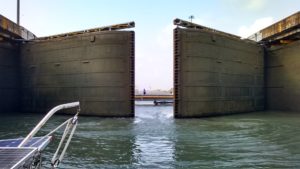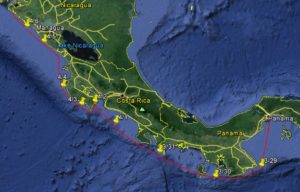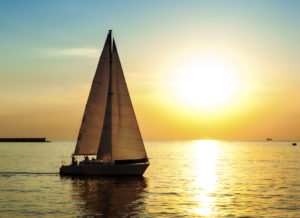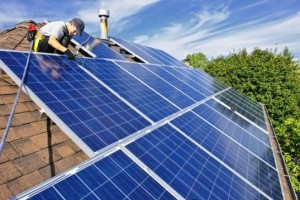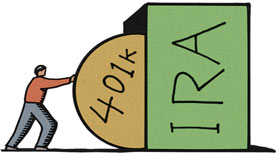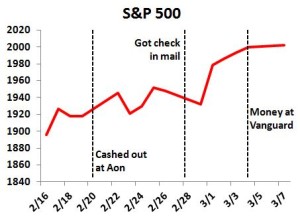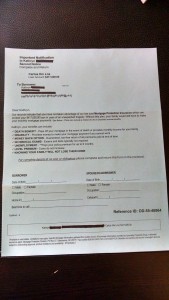Race relations in this country are worse than they have ever been since the 1960s. Basketball in the NBA has never been better.
A couple months ago we had the Oscars and the associated controversy that not a single nominee in any of the acting categories was black. I’m not really into the Oscars (Foxy Lady is because she loves the runway shows), but I’m really into basketball. It got me thinking about how overwhelmingly black the NBA is and what causes it to be so.
Let’s just get a couple things out of the way: I have no problem with the racial composition of the NBA. I love watching good basketball. The better the players, the better the basketball. If the best players are black, then those are the players I want to watch.
NBA demographics: The NBA is overwhelmingly black. About 80% of the players are black, 18% are white and there is a small handful of Asian and Hispanic players. But that’s a little misleading; the league is much blacker. All players are not created equal. You have your stars who play the most minutes, score the most points, and get the most exposure. And you have the benchwarmers who are counted in those player statistics but live in virtual anonymity.
If you look at the best players, they are even more black than the overall NBA. The most recent all-star game featured 26 players, one of whom was not black (Pau Gasol).
That trend is consistent going back at least to 1990 (when I got tired of counting). You usually have 2-4 non-black all-stars. I said “non-black” instead of “white” because Yao Ming, an Asian, has been an all-star. So between 85-95% of the all-stars are black.
You see similar results looking at the All-NBA teams. Going back to 1988 (when the current format was adopted), there have been 135 All-NBA first-team players (5 players each year for 27 years). Of those 135 players a grand total of 12 where white; the other 91% were black.
In a country where about 13% of the nation is black, we have a league that is 90%+ black. Clearly something is going on. Now let’s figure out what it is.
Role of genetics: This is a tricky one, certainly a “politically correct” minefield (but really this whole blog is a politically correct minefield, so whatever). Of course, NBA players are physically different from the broader population. The average height of an NBA player is about 6’7”, while the average height of an American man is 5’10”. That’s a pretty big difference, and one obviously driven by genes.
The data show that black men and white men are similarly tall. The data does show that Hispanic men are significantly shorter, so that goes a long way in explaining why there are so few Hispanic players, but it doesn’t explain the black-white disparity.
Clearly to be successful in the NBA you have to win the genetic lottery. In a country with 30 million men between 20 and 35, there are only about 350 NBA players. Given that the life of an NBA player is pretty awesome along almost every dimension, let’s assume a large portion of those men would want to be NBA players if they could. So statistically, an average guy has about a 1 in 100,000 chance of being in the NBA.
Of course, our genetics goes a long way in weeding most of us out. To be in the NBA you need to be tall, but then you also need to be fast, strong, have a deft touch and endurance, and on and on. And these don’t seem to be traits that can be inherited from your parents. In the entire 60+ year history of the NBA there have been over 3000 players, with about 70 whose fathers also played in the NBA.
Certainly 2% of the player population implies some type of genetic gift that is passed on from father to son, and 2% is much higher than the chance of an average American making it to the NBA, but that really doesn’t seem all the high. If a generation ago those NBA players had the best genes, which they then passed on to their sons, why aren’t there a lot more sons of NBA players following in their fathers’ footsteps? Genes are important but there must be an even more important ingredient.
Talented is talented: There’s a lot of reason to believe that the most talented players in the NBA would have succeeded in life, even if they didn’t play in the NBA. We know that genetics plays a role in determining who makes it to the NBA, but that seems to be table stakes. You have to have a minimum amount of genetic “gold dust”, and obviously the more the better, but the father-son data shows beyond that genetics plays a very small role.
So what could be the larger determinant: hard work. What makes the best NBA players the best is hard work. It’s difficult to look at this analytically, but the league’s best players—Michael Jordan, Kareem Abdul-Jabbar, Kobe Bryant, LeBron James, and more recently Steph Curry—are/were notorious for their amazing work ethic and practice methods.
Empirically, we see this translate beyond the basketball court. Definitely, it’s difficult to assess their work ethic or careers away from basketball because they made so much money in their NBA careers, there isn’t a need to work. But if you look, you can find it. Magic Johnson became a hugely successful businessman after his playing days. Jerry West is probably the best NBA general manager ever. Kareem is one of the most intelligent and thoughtful people in media when he decides to make himself available. Charles Barkley is the best basketball analyst, Larry Bird is a highly regarded executive for the Indiana Pacers, Bill Russell was a championship coach, and Jordan was a professional baseball player.
All those players are generally considered among the 20 greatest players ever. To be that good in the NBA takes a work ethic, charisma, insatiable desire to succeed, and on and on. The point is, all those translate to success in pretty much every field, in athletics or not. If basketball never existed, if professional sports never existed, those guys would have succeeded in business or science or whatever career they ultimately pursued.
If Jordan entered the construction industry, Jordan Custom Homes would be the largest homebuilder in the Carolinas. If LeBron was an aerospace engineer, the LBJ6 rocket would be powering the first manned mission to Mars. If Kobe went into the restaurant business, you could order a Black Mamba with cheese from 25 locations across the Philadelphia area. If Magic went into the movie theater business, he’d have the most successful theaters in Los Angeles—wait, that actually happened. If Kareem became a historian, he would be a best-selling author—wait, that actually happened too. You get my point.
The Black Thanksgiving: Highly regarded sports journalists David Aldridge and Michael Wilbon have called the NBA All-star weekend the Black Thanksgiving. I don’t know about that, but the mere suggestion speaks to how popular the NBA is in the black community. Basketball is extremely popular in the United States, and among the black communities in the US its popularity is off the charts.
There are about 5 times as many white people as black people in the US. Yet, estimates show that there are more black NBA fans than white. Statistically, that’s astounding. If you do some quick math, that means the black community has about 7 times as many NBA fans per capita. And keep in mind the NBA is really popular among whites. That’s not to say every single black American is an NBA fan, but if those numbers are accurate (as well as the sentiments of Aldridge and Wilbon) it can’t be far off. No matter how you slice it, the NBA is uber-popular among blacks.
You can pretty easily imagine that makes a virtuous cycle. Black boys see black men in the NBA, and want to do that when they grow up. That leads to a new generation of black NBA players who inspire a new generation of black boys. More on this in a minute.
A terrible career choice: Deciding to pursue a career in the NBA is an awful career decision, and any parents who wanted the best for their sons would probably steer them away from that. Think about it for a minute. Sure, if you’re at the very, very apex of the NBA pyramid then you probably have the best life in America (money, fame, women, etc.), but those perks fall off extremely fast. Actually, even if you’re at the very top (think LeBron) your life is amazingly awesome, but actually quite ordinary compared to other career choices.
If you’re a top 3 basketball player then you earn about $25 million per year in salary plus $50 million in endorsements. If you’re top 30 (low end of All-stars), you make about $10 million per year and no endorsements. Top 300, you’re barely in the league, probably working from 10-day contract to 10-day contract and doing auto dealership security in between those; let’s say you pull in $250,000. Top 3,000 or lower, you’re really good in pick-up games at the local YMCA and you support yourself with a job that has nothing to do with professional basketball.
Compare that to a job like engineering. If you’re a top 3 engineer in the country, you own your own tech start-up and are worth $5 billion. Top 30, you still probably own a start up, or maybe you’re CEO of a more established company; either way, you’re pulling in $20 million a year. Top 300, you’re a CEO or senior VP, pulling in $5 million a year. Top 3,000, VP level, pulling in $1 million per year. Top 300,000, a cushy manager level job making $150,000+.
Add on top of all that that the average NBA career is less than 5 years, most of which end not by the player’s choice, while the average engineering career can go on indefinitely. Between the NBA and engineering, if you look at it purely as a job to earn an income for you and your family, why would anyone pick basketball? And we used engineering as a comparison, but the story would be near identical for accounting or finance or doctors or lawyers or computer programmers or a ton of other careers.
Going all in: To make it to the NBA you pretty much have to dedicate your entire life to basketball. This isn’t something you can do halfway. Because of that, pursuing the dream of playing in the NBA becomes an extremely high-risk proposition.
If you’re a young man with the physical gifts to seriously pursue the NBA, you have a choice you must make. You can give 100% of yourself to basketball, but then that doesn’t leave much time or energy for you to develop other skills—math, science, literature, etc.—that could be helpful for non-basketball careers. So basically, you’re making the choice of “basketball or bust”.
On the other hand, if you hedge your bets, and dedicate some of yourself to basketball but also pursue those other interests, you’ll never make it to the NBA. Sure, that’s a flip statement, but it’s fairly accurate. If you’re only giving 50% or 80% or 90% or 99% to basketball, there are thousands of other guys who are willing to give more, give 100%. All other things being equal, the guys giving 100% are going to make it before the guys giving anything less. That is a recipe for a high-stakes gamble that doesn’t pay off for the vast majority, and it leaves those who play and lose in a very difficult situation.
Let’s play with the numbers just to see how risky it is. Assume there are 50,000 guys who want to play in the NBA for every NBA roster spot. Only 5% of those guys have the physical gifts to even make it a reasonable consideration, so that’s 2,500 guys for every NBA spot. 5% of those guys go all in and dedicate their lives to basketball—that’s 125 guys for every NBA spot. Those are horrible odds. Sure, one will win and we’ll celebrate him, but the other 124 will be screwed. They’ll have developed really strong skills in dribbling and shooting and rebounding and defense, but other than the NBA there aren’t a lot of jobs that value those skills. Sadly, the vast majority will be forced to take low-wage jobs because they don’t have marketable skills.
Maybe I’m wrong on the exact numbers, but directionally I’m right, and the larger point is absolutely true. Pursuing a career in the NBA is a huge gamble where a very small portion win and most of the losers not only lose, but they lose big and hit rock bottom. It’s a terrible career aspiration for a young man. Yet, why do so many young men, especially young black men, pursue it?
Poor man’s game: Larry Bird has become a bit of a polarizing figure due to his race. He’s pretty universally regarded as the best white NBA player ever, and certainly among the top 20 when you compare him to black players as well.
He once made a statement that basketball has become a “black man’s game”. Of course it was controversial because anything said in our society about race is controversial. And the data I showed earlier seems to corroborate his view, yet I think he’s wrong. Basketball isn’t a black man’s game, it’s a poor man’s game.
Doing a bit of internet research, mostly relying on Wikipedia articles, I took my personal list of the top 20 NBA players, and grouped them based on how they grew up: poor, middle-class, or rich. The data is hard to come by since it’s not like they track this and explicitly say this guy grew up poor while this guy grew up in the middle class. Certainly I got some of these wrong, but directionally I’m right.
| Poor | Isaiah Thomas, LeBron James, Larry Bird, Jerry West, Oscar Robertson, Allen Iverson, Dwayne Wade, Magic Johnson, Wilt Chamberlain, Bill Russell, Karl Malone, Elgin Baylor, Moses Malone, Shaquille O’Neal |
| Middle-class | Kareem Abdul-Jabbar, Michael Jordan, Tim Duncan, Hakeem Olajuwan, Julius Erving |
| Rich | Kobe Bryant |
There are 20 names on that list, and 14 of them grew up poor. Some grew up so poor they explicitly said so in the bios like Russell, Oscar, Bird, West, and both Malones. With a normal swath of the population you wouldn’t expect 70% of the best people to be poor any more than you would expect them to be 90% black.
Interestingly, the only NBA great who grew up rich is Kobe, whose father happened to play in the NBA. Maybe one day Steph Curry will make the list of all time greats, and maybe if Grant Hill not had terrible foot injuries he would have made it too. Both those men grew up rich, but they also grew up with fathers who were professional athletes (Steph’s dad played in the NBA, Grant’s in the NFL). So it’s hard to separate genetic gold dust from wealth. But from this data it seems pretty clear that very few rich kids make the NBA, and the few examples have a genetic component.
Something is going on, so let’s figure out why basketball greatness is so correlated with poverty.
If you don’t know, you better ask somebody: Certainly poverty can be an enormously powerful motivating factor. We’ve already discussed that to succeed in the NBA you have to work harder than the other 50,000 people who are also chasing that one spot.
Many players have explicitly said that their impoverished childhoods motivated them to do whatever it took to succeed in basketball, staying late to practice when all the other kids went home. Does a rich kid have that same motivation? I think reasonable people would say maybe not so much.
So there’s probably something there, but why basketball in particular? If you’re a kid who’s poor but has the will to succeed in an incredibly competitive environment like professional basketball, why choose basketball where the risk of failure is so high? Why not use that same intense drive to study math and science to become a world-class engineer? We know the rewards at the top are just as good, and the risks and consequences of failure are considerably less.
This is where the poverty card comes in. Nearly every little boy dreams of being a professional athlete at some point. Given the “Black Thanksgiving” factor, that desire is probably even more acute among black boys.
Knowing the odds are so against it, informed parents will encourage their boys to develop other skills “just in case that basketball thing doesn’t pan out.” However, if the parents or other adults in that boy’s life aren’t informed, the boy may not know that chasing that basketball dream isn’t a good idea. Further, he may not know what other dreams to chase.
If you grow up poor, it’s probably because your parents don’t have good jobs. If they don’t have good jobs, it’s probably because they aren’t educated. Of course these are generalizations, but national data clearly shows strong relationships between these factors.
In impoverished communities, how knowledgeable are the adults of careers like a scientist or an engineer or an accountant? Probably not a lot, because they don’t interact with them. If they aren’t knowledgeable it’s really hard to tell the little boy, “you know what you’d be really good at? Finance because you’re so good with numbers.” That’s a huge missed opportunity.
But in poor communities, what’s something that people are knowledgeable about? Sports. It’s on TV, it’s celebrated in the towns, it’s seen as an avenue to upward mobility. So loving but unknowledgeable parents see their talented sons and push them towards basketball. Those parents love their boys just as much as richer, more knowledgeable parents do. They want professional success for their boys just as much. It’s just the poorer parents don’t know about all the options that rich parents do, so they fall back on the thing they see all the time—basketball.
The correlation of poverty and race: If we believe that the NBA is “a poor man’s league” more than it is “a black man’s league”, then that begs the question why is it so black? The answer is, sadly, that black America is much poorer and less educated than white America, on average.
This of course is a serious and important issue in our society, and one that I hope improves. Unfortunately, it’s an extremely difficult and complex issue that defies easy solutions. Nonetheless, it’s a fact. And that fact is what is driving the NBA to be overwhelmingly black. A higher percentage of black boys are raised in poor and poorly educated families. Hence, a higher percentage of black boys are pursuing sports careers because they don’t have parents who are knowledgeable enough to wisely steer them to something else.
The trail of career corpses: You’ve stayed with me for over 3,000 words, so let’s put a bow on this. Why is the NBA so black?
First, let’s clearly debunk the myths. It’s not that black men are bigger, stronger, or more athletic. That’s a racist view which the data clearly refutes this.
Now, let’s look at the reasons, and more importantly how that impacts our society. The key driver seems to be poverty in the boy’s family, and the associated lack of knowledge that accompanies that—lack of knowledge about the abysmal odds of success and lack of knowledge about alternative careers. Since poverty is more prevalent in black communities, that leads this issue to be more prevalent among black boys.
This is further compounded by the oversized importance and popularity of basketball in the black community (Black Thanksgiving), leading to a self-perpetuating system. Basketball is so popular among blacks that more blacks pursue it as a career. As more blacks are showcased in the NBA, it becomes more popular among the blacks, and on and on.
As a fan of basketball I love it because I get to watch so many amazing athletes play such an amazing game. As an American who wants racial harmony, I hate it.
Pursuing a career in the NBA is like using lottery tickets as your retirement plan. The winners are celebrated, but for every one winner there are thousands of losers who no one thinks about. For every one LeBron there are tens of thousands of No-name McGees who went all in on that NBA dream, but failed and were left with nothing. NOTHING!!! The fact that it happens disproportionately to black men furthers one of America’s biggest, saddest, most difficult issues—the racial income gap.
Just for example, look at Ed O’Bannon. He was the best college basketball player in 1995, winning the Wooden Award as such and leading UCLA to the national championship. No doubt he completely dedicated himself to basketball in order to be the best. But the NBA didn’t work out, and after two seasons he was out of the league. Now he is a car salesman in Nevada. I don’t know what car salesmen make or how fulfilling of a career that is, but I bet it’s not that good. The world thought Ed was the best at basketball, and we know if he pursued engineering or finance or law or medicine he could have been pretty good there too. As it turned out he wasn’t the best at basketball, not even in the top 500. Basketball is a cruel mistress and if you aren’t at the top then you’re nothing. But other careers are much more tolerant, and maybe O’Bannon could have been among the top 1000 engineers or doctors or lawyers. If he was he’d be pulling in over a million dollars per year. As it is, he’s a car salesman.
O’Bannon is an example we know about, and I admire his bravery for telling his story. The fact is there are millions of O’Bannons out there who have crappy careers because when they had their chance to go all-in on something, and they went after the longest of long shots. And this happens to blacks more than any other race.
That’s the part I hope changes. I hope more parents, including black parents, but especially poor parents, start having serious talks with their sons and tell them they are talented and maybe they could make the NBA. But, even more importantly, they are talented and definitely they could become successful doctors and lawyers and scientists and engineers. If money is important, there’s more money in those careers than the NBA (a really important point).
So there you have my take on why the NBA is so black and why I hope it becomes less black. By the way, GO WARRIORS (since my Lakers suck)!!!



